NEONATOLOGY ON THE WEB
The Nursling
Lecture 7
By Pierre Budin, Professor of Obstetrics, University of Paris; Director
of the Clinique Tarnier; Member of the Academy of Medicine, Paris, France. Authorized
translation by William J. Maloney, M.B., Ch. B., 1907.
Gentlemen,
In our last lecture we studied various conditions in which it is
still a vexed question whether breast-feeding should be encouraged or
not. There are others, however, in which we have no option -- such as
those in which congenital malformation prevents an infant from
exercising the suction necessary to extract milk from the mother's
breast. Here we are compelled to have recourse to artificial feeding.
For example, on March 17, 1893, an infant was born in the Clinique
with a hare lip and cleft palate. As it was absolutely impossible for
him to be suckled, he was fed from the first on undiluted sterilised
milk with excellent results. When three days old he weighed 2825
grams, and when seventeen weeks, 6925 grams. He had thus increased by
4100 grams, or, on an average, 39 grams daily. His curve was quite
superior to the normal (Fig. 76). He
progressed in such a fashion that at the seventh month, when the
malformation was surgically treated, he weighed 11 kilos. After a
slight halt, consequent on the operation, he began once more to
increase, and to-day is one of the finest children I know.
Recently, I saw another case of the same kind. As the infant was
incapable of sucking, it was fed first with asses' and later with
cows' milk, undiluted and sterilised (Fig. 102).
Strange to say, there are infants who will not take the breast.
This abstention is sometimes only temporary, but occasionally it is
permanent. You have just seen in the wards a case of a full-term,
well-developed infant whom, at the beginning, we could get to accept
nourishment only by means of gavage; he afterwards consented to be
fed from a spoon, and some days later to be suckled by his mother. As
we had meanwhile given another infant to her to nurse, her mammary
secretion was fully established, and she was able herself to rear her
child.
On November 6, 1893, I assisted at the delivery of a strangely
wayward infant. He was perfectly developed in every particular,
except that the roof of his mouth was slightly more arched than
usual. He sucked a little at first, but soon altogether refused the
breast. Several wet-nurses were tried without success. On November 14
the infant weighed 3030 grams. On November 15, as he would take only
248 grams from the breast, he was given asses' milk in addition. The
details of his feeding were as follows:--
|
Date
|
Breast Milk
|
Asses' Milk
|
Total
|
|
November 15
|
248 grams
|
300 grams
|
548 grams
|
|
" 16
|
270
|
380
|
650
|
|
" 17
|
318
|
220
|
538
|
|
" 18
|
195
|
490
|
685
|
|
" 19
|
0
|
700
|
700
|
A second wet-nurse was obtained; as her own child became ill she
had to leave, and a third was immediately chosen:--
|
Date
|
Breast Milk
|
Asses' Milk
|
Total
|
|
" 20
|
385 grams
|
270 grams
|
655 grams
|
|
" 21
|
160
|
505
|
665
|
|
" 22
|
120
|
575
|
695
|
On the 23rd, in spite of all persuasion, the infant would not
suck. Breast-feeding having thus, perforce, to be suspended, asses'
milk was given, diluted with lime-water. This mode of feeding was
continued till December 2, during which time I still had hopes of
ultimately persuading the infant to take the breast. I was then
obliged to reconcile myself to rearing him artificially, and from
December 3 he took nothing but undiluted sterilised cows' milk. The
digestive tract behaved admirably; all our difficulties disappeared,
and the curve rose to surpass the normal. On April 5 the infant
reached 7550 grams; as it had gained 4085 grams in 123 days its
average increase was 33.5 grams per day.
Other infants quite capable of being suckled are yet unable to
tolerate human milk. I published a curious example of this in 1893. A
child born on February 21, 1893, with a weight of 4800 grams, did not
weigh more than 4575 grams on March 2, in spite of having an
excellent wet-nurse. Whenever he was suckled he became deadly pale,
and between the breast-feeds he seemed to be threatened with syncope.
As I was therefore obliged to feed him artificially, I prescribed
asses' milk on March 5, and the wet-nurse was dispensed with; on
March 9 he weighed 4820 grams. A second wet-nurse with an abundant
supply of milk was procured, but, several days after, his stools
became badly digested, the pallor on being suckled reappeared, and
the semi-syncopal attacks again occurred. On March 16 convulsive
movements were observed, and on March 19 he absolutely refused to
take the breast. He was again fed exclusively on asses' milk, and
this wet-nurse, like her predecessor handsomely compensated, was also
allowed to go. Asses' milk succeeded very well to begin with; on
April 5, at the seventh week, the infant weighed 5500 grams. But then
the former symptoms reappeared; the digestion became imperfect, and
the pallor and sync opal attacks recurred. Fearing that there might
be some cerebral origin for these attacks, on April 8 I had a
consultation with the distinguished neurologist, Dr. Simon, who
expressed the opinion that the symptoms arose from purely alimentary
causes. On April 10 the infant resolutely refused asses' milk. As
this state of affairs persisted on the following day, I was forced to
place him on cows' milk. It was sterilised, and given sometimes
undiluted, sometimes with one-fourth of its bulk of water added. It
was found that he always began to cry about an hour and a half after
taking the diluted milk, whereas, after the pure milk he waited two
hours without protest. Pure milk was then given exclusively. He
throve thenceforth, and his curve became superior to the normal. When
aged fifteen months he had twelve teeth and weighed 11,500 grams.
Sometimes it is not the infant but the mother who is the source of
difficulty. Some women have practically no mammary secretion. They
are extremely rare, but I shall have occasion, later, to report to
you in detail the history of a woman, named Liv____, who had three
children whom we were compelled to rear artificially as she never had
any milk; her breasts were absolutely flat and her nipples
umbilicated. Other women have very little milk, and are thus unable
to provide sufficient for their infant's wants.
In these cases some other milk must be employed either to replace
or supplement the mother's supply. Rich women employ wet-nurses, poor
women use animal milk.
The different milks uses are those of the ass, the goat, and the
cow. Asses' milk closely approaches human milk in composition, but it
is generally poor in butter. It is easily digested by the newly born,
who thrive upon it; but large quantities need to be taken, and it
soon becomes an inadequate diet for the growing infant (Fig. 102).
Asses' are milked twice daily, in the morning and evening; the milk
ought to be collected in vessels which have been thoroughly cleaned,
and washed in boiling water; heated in a steriliser to about 37°
C., and then given pure, without the addition of either water or
sugar. Unfortunately it is very dear, keeps badly during summer, and
is liable to alteration on boiling. Hence it is but little employed.
Goats' milk is much used in some countries, and is of great value,
but it is rarely obtainable in large towns.
It is upon cows' milk, therefore, that we mainly rely for infant
feeding. Normally, each litre of cows' milk contains 870 parts of
water and 130 parts of solids. The latter comprise--
|
Butter
|
40
|
|
Milk sugar
|
50
|
|
Casein, salts, and extractives
|
40
|
The milk should be obtained from well-nourished, healthy cows; it
should be the product of a complete milking, and it should neither be
skimmed or watered.
The cows must be healthy; tuberculosis, inflammation of the udder,
aphthous fever and other diseases render their milk a source of great
danger to the consumer. They must be well nourished; malt and certain
other food-stuffs given in excess make the milk most harmful to
infants. The milk must be the product of a complete milking, for the
first of the milk is generally too poor, and the last too rich, in
fat. Lastly, it must be neither creamed nor diluted.
Unfortunately, in large towns, especially in Paris, these
requirements are but rarely observed. In 1897, on the initiative of
M. Paul Strauss, a commission was appointed for the study of milk as
food. The municipal laboratory took, at random, samples of the milk
offered for sale in each of the twenty districts of Paris. These
specimens were analysed, and here I have depicted graphically the
quantity of butter found in each (Fig.
78). The first column, that coloured red, corresponds to a normal
milk with 40 grams of butter per litre. All the other columns are
smaller; only 6 contained more than 30 grams of butter per litre; 14
had less than 30; and in certain samples we found as little as 19,
17, and even 15 grams. The uncoloured part of each column represents
the deficiency in butter, 40 grams per litre being taken as the
average. All the milks had been skimmed; the best of them was still
without 10 per cent. of the fat; but in some the skimming had removed
41, 43, 45, 47, 49, and even 59 per cent. of the normal amount of
butter. In some instances not only was part of the cream wanting, but
the milk had also been watered.
I had previously made a similar examination in one of the poor
quarters of the city, from which infants were arriving at the
Consultation, obviously underfed, although their mothers asserted
they were giving them milk in quantities which should have been amply
sufficient. Samples of milk were obtained from the various dairies
patronised by these women. Here is a graphic reproduction of the
results of analyses of so-called milks taken from forty-five
different sources (Fig. 79).
Numbers 1 and 2 cost twopence per litre; 3 to 36 inclusive,
twopence-halfpenny; and 37 to 45, threepence.
|
Samples
|
Butter contained
per litre in grams
|
|
1
|
37
|
|
4
|
32
|
|
3
|
31
|
|
6
|
30
|
|
4
|
29
|
|
2
|
28
|
|
3
|
27
|
|
4
|
26
|
|
2
|
25
|
|
2
|
24
|
|
5
|
23
|
|
2
|
22
|
|
3
|
19
|
|
2
|
17
|
|
1
|
16
|
|
1
|
15
|
Only once, No. 38, did the milk contain 37 grams of butter; this
specimen was sold for threepence per litre by a dairyman who had just
begun business. Seven times it reached 31 or 32 grams, and the
remaining thirty-seven samples gave 30 grams, or considerably less.
Think of the deplorable consequences of the use of such milk for
infants and invalids. How can an infant thrive on milks which contain
only 19, 17, 16, or 15 grams of butter? He requires to drink a
certain bulk of pure milk to obtain the necessary amount of fat. But
with liquids such as these he will have to ingest two or three times
that volume, which is not only a great inconvenience, but also a
menace to the infant's health. Further, mothers, believing they have
bought pure milk, consider it their duty to dilute these lacteal
fluids with water.
The hospital milk is happily of good quality. The dairymen supply
it, on contract, to the public authorities, who supervise it
rigorously; it is analysed daily, and, till, 1898, had to contain 27
grams of butter per litre, but since that year the standard has been
raised to 38 grams.
Pasteur and his pupils have demonstrated the dangers of milk as a
carrier of infection. Bacteria develop in it with extreme facility.
Some of these bacteria, as we have already seen, originate in cows
affected with contagious diseases; others come from extraneous
sources, such as the air, the milking fingers, or the water used to
cleanse the milk vessels or to dilute the milk. Introduced into the
digestive tube, these organisms multiply, and may give rise to
serious disturbances. Diarrhoeas, including infantile cholera, the
death-scourge of infants during summer, are caused by microbes.
The milk must, therefore, be maintained unaltered between the time
of milking and that of use, and it must, in addition, be rendered
inoffensive by making it sterile through the destruction of any germs
it may contain.
To achieve these ends many plans have been devised.
The chemical methods of preservation should be discarded. To add
bicarbonate of soda, formalin, and such substances to milk is
equivalent to fraud, and is, moreover, a danger to the public health.
Preservation can be greatly aided by cold; this is, however, not
only relatively a costly process, but it also leaves the microbes
intact. The following is the method of refrigeration at present
employed:--
A hollow metal cylinder is filled with water, which, by being
reduced to freezing-point, is converted into ice. The cylinder with
its contents is then inserted into a can of milk, which is accurately
closed by the lid-like formation of the upper part of the cylinder.
As the milk surrounding the ice-containing cylinder is thus
maintained at a low temperature for many hours, it can be conveyed
long distances in excellent preservation.
Cold does not destroy either pathogenic or non-pathogenic
organisms. Heat is the bactericidal agent generally used for milk,
and it is applied chiefly by the methods of pasteurisation and
sterilisation.
In pasteurisation the liquid is heated once to about 60° C.,
and then rapidly cooled. This method enables the milk to be sent long
distances; it retards the multiplication is germs, but it does not
kill them: as milk thus treated is not sterile, neither is it
harmless.
Sterilisation of milk may be achieved in various ways: the milk
may be boiled; heated in closed vessels to 100° C. for
forty-five minutes; raised to 110° C. for a sufficient length of
time; or subjected to discontinuous heating.
It should be boiled as soon as possible after milking, and kept
in, and sold from, the vessel in which it has been boiled.
It is customary to boil the milk in an open vessel; before being
covered it must first be allowed to cool, otherwise the steam would
condense on the cold lid in droplets, which, in running back, would
carry into the milk organisms and impurities. If the milk be covered
whilst hot, the lid must first be thoroughly cleansed in boiling
water.
Boiling kills nearly all germs. Some, however, escape, and under
favourable conditions of temperature can multiply and bring about
changes in the milk. Milk, therefore, must not be placed in
overheated rooms, and, especially during summer, ought to be used
soon after it has been boiled.
The milk may be heated in closed vessels in a steriliser at
100° C. Soxhlet recommended that milk destined for infants
should be distributed in small bottles, each containing the supply
necessary for one feed only, and in quantities determined by the
number of the infant's daily meals. He used bottles the mouths of
which were planed so as to ensure the accurate adaptation of the
stopper he devised (Figs. 80 and
81). They were maintained upright in a
metal basket, and placed in a vessel containing cold water. The water
having been raised to boiling-point, and kept at that temperature for
three-quarters of an hour, the basket of bottles was withdrawn. A
relative vacuum developed within each bottle on cooling, so that, the
stopper having become more and more firmly applied, the bottle was
hermetically sealed.
When a meal has to be given, one of these bottles is warmed, the
stopper detached, and an indiarubber teat put on. No germs have been
able to reach the milk, and it passes to the infant's stomach as pure
as that which flows from a mother's breast.
Soxhlet's apparatus is ingenious; the apportioning of the milk
into quantities for single feeds and the automatic closure of the
bottles constitute a great advance. But it is not without its
drawbacks. The indiarubber disk of the stopper soon stretches, and by
rubbing against the metallic capsule becomes slippery, so that it
does not remain in position when the bottles are left to cool, and is
easily displaced by any slight jar during transportation. Nor does
the disk continue to adhere tightly if there is any crack or
unevenness in the planed margin of the neck of the bottle. In my
experience the operation fails in one or two out of every ten or
twelve bottles thus sterilised.
Hence several analogous inventions have since been devised to
overcome these defects.
Gentile's has all the advantages without the disadvantages of
Soxhlet's. It consists of a plated metal steriliser with a stand for
the bottles; graduated bottles; and automatic stoppers.
The steriliser is made in various sizes and, according to its
dimensions, is provided with a stand to contain five, ten, or
twenty-five bottles.
The bottles are graduated in 25 grams; they contain varying
amounts -- 50, 100, 150, or 200 grams, according to the infant's age.
There is a large planed margin round the mouth of each bottle.
The automatic stopper is a small red indiarubber disk, on the
under surface of which is a central appendage
(Fig. 82).
The quantity of milk necessary for a single meal is poured into
each bottle and a stopper applied. All the bottles thus prepared are
placed in the metal support, which is then put into the steriliser,
the cold water in which ought to reach the level of the milk in the
bottles (Fig. 83). After the lid has
been put on, the whole apparatus is heated over a gas burner; the
temperature of the water is raised to boiling-point, where it is
maintained for forty-five minutes. This having been done, and the lid
raised, the bottle-stand is taken out and allowed to cool. As the
temperature falls the stoppers adhere firmly. As the condensation of
the water vapour, which during boiling replaced the air within the
bottles, gives rise to a relative vacuum, the stopper is thus fixed
by the atmospheric pressure on its upper surface, and can be seen to
become depressed in the centre as the cooling progresses.
Examination enables one easily to ascertain if this vacuum exists
and, hence, if sterilisation has been effected; 1st, the disc of the
stopper should adhere tightly to the mouth of the bottle; 2nd, on its
upper surface there should be a central depression; 3rd, the
water-hammer phenomenon should be present. To elicit this the bottle
is held in the left hand; it is then turned upside down, while the
bottom is sharply struck with the ulnar border of the right hand; the
liquid, displaced by the blow, hurls itself en masse against
the sides of the bottle, producing a peculiar and characteristic
sound.
Before the infant is fed the milk is heated by placing the bottle
in warm water. One of the edges of the stopper is then raised, and
air rushes in with a hissing noise. The contents should be tasted, so
as to make sure that the milk is of normal flavour, and neither too
hot nor too cold. A teat or a galactophore
(Fig. 86) is applied directly to the
neck of the bottle, and then the infant is fed.
The bottle mouths in Soxhlet's and Gentile's apparatus have planed
margins. Not only is their cost thus increased, but if the slightest
irregularity exists on this smoothed edge, the indiarubber disc will
not adhere on cooling.
I have tried to do away with these special bottles, for, although
they may be obtained more or less easily in large towns, they can
only be got with difficulty in country districts. I desired also to
cheapen the process of sterilisation, for at first the necessary
appliances were somewhat costly. I made indiarubber hoods like the
metallic capsules which are used on many mineral water bottles. The
summit of the hood is hollowed, and at the bottom of the depression
the indiarubber is specially strengthened. The free margin of the pat
which encircles the neck of the bottle is thickened in the form of a
ring (Fig. 84). Any small bottle will
serve, such as is used by druggists, for example. It should be
two-thirds or three-quarters filled with milk, covered with the
indiarubber hood, and then placed in the steriliser
(Fig. 85).
Under the influence of heat the milk gives off water vapour, which
raises the depressed portion of the hood. To prevent its being
entirely lifted off, two small holes are made near the top of the
part which encircles the neck. A vacuum is produced inside the bottle
on cooling, and the part of the hood over its mouth is bulged inwards
so that the bottle is hermetically sealed by atmospheric pressure
(Fig. 84 B and
C).
These hoods have the advantage of being applicable to any small
bottle whatsoever, but they have certain small inconveniences; when
the bottles are taken out of the steriliser it is often necessary to
readjust the hoods so as to ensure the complete closure of the
bottles, and, further, the vacuum is not quite perfect, for the air
slowly filters in. However, the sterilisation amply suffices for
twenty-four hours; during the height of summer I have seen milk thus
prepared remain unaltered for weeks. Bottles sealed in this fashion
can be transported with absolute safety.
Before feeding the infant the milk should be warmed, the hood
removed, and a teat or a galactophore applied
(Fig. 86). The whole apparatus is
simple and cheap. The bottles may be had graduated, so that the milk
may be dispensed in the quantities necessary for each feed.
I first devised these hoods in June 1892, but I carefully
refrained from making them known, for I thought that it was not
conducive to the spread of the practice of milk sterilisation to
multiply the number of apparatus. Their existence was known only to
four persons, and I continued to recommend the inventions of Soxhlet
and of Gentile. Imagine my surprise one day, about a year later, when
I saw a prospectus lauding their merits and advertising their sale.
As my confidants were no less astonished than I, an explanation was
demanded from the indiarubber manufacturer, who was the only other
person cognisant of them. I threatened to prosecute him. "I confess I
am to blame," said he, "but let me explain how it happened. One of my
children, bottle-fed, was stricken with diarrhoea and like to die. I
had made these hoods for you and knew their purpose. I took several
of them, and sterilised the milk given to my little one. His symptoms
abated, and he gradually recovered. As I knew the prohibitive cost of
the milk-sterilising apparatus on the market, I resolved to make and
sell these hoods at the lowest possible price, so as to bring them
within reach of the poor, and thus add my feeble efforts to the
protection of infant life. I do not seek for gain, I wish only to
further this work of humanity. I beg of you to let me continue. You
will find the poor have no cause to regret it." I dared not refuse.
It was thus my invention was popularised almost in spite of myself.
Nowadays systems without number, each more simple, more ingenious
than the other, are manufactured on every side; nearly all are
valuable. Competition has brought about the cheapness I so greatly
desired to attain, and the only remaining difficulty is the
embarrassment of making a choice.
In default of special stoppers there is yet another way of making
use of ordinary small bottles. They are thoroughly washed and left to
drip. The requisite quantity of milk is poured in, and they are
closed by plugs of cotton wool or pieces of linen fastened over their
mouths. Then they are placed in a special metal support, and, as
before, introduced into a steriliser.
If it be considered needful to dilute the milk, this should be
done before sterilisation.
Any milk remaining in a bottle after a feed ought not to be again
offered to the infant, for it is no longer sterile. The organisms of
the mouth, entering the bottle through the teat, rapidly multiply,
and produce alterations in the milk.
Every bottle emptied ought at once to be thoroughly washed. Soap
or carbonate of soda added to the water facilitates the removal of
fatty particles. After being washed the bottles should be carefully
rinsed. This cleansing is of great importance, for dregs of milk
become soured and contaminate any fresh supply put into the bottle.
The sterilised milk in these small bottles should be used within
twenty-four hours.
If one or more bottles have not been opened, and it is desired to
use them on the following day, they must be resterilised.
These different procedures give not an absolute but a relative
sterilisation. When milk has to be preserved for more than
twenty-four hours it must be freed from all living organisms. This is
done either by discontinuous heating below 100° C., or by one
prolonged exposure to 110° C. Discontinuous heating is costly,
and hence but little used. Sterilisation at 110° C. is widely
practiced. Milk thus treated is sold in half-litre and in one-litre
bottles. It is also dispensed in smaller bottles, each containing the
equivalent of one feed -- 40, 50, 60, 75, 100 grams, &c. These
bottles are corked, and each cork should bear a stamp with the date
of sterilisation, so that the consumer may know when it was prepared.
Before such milk is used it ought to be rigorously examined to
make sure -- (1) that it is of normal appearance, neither curdled nor
dark in color; (2) that on opening the bottle the contents are
sweet-smelling and do not liberate any gas; and (3) that the liquid
has the usual taste of milk.
Cream that has risen to the surface should be put in suspension by
shaking after the milk is warmed. The milk should be poured directly
into a scrupulously clean feeding bottle. If it has to be diluted,
boiled water should be used. If the small one-feed bottles are
employed, it is necessary only to remove the cork and fix a teat on
the neck.
Weber, Michel, and others have shown that sterilisation has no
deleterious influence on the nutritive value of the milk. I need
hardly say that the milk which is sterilised must be of good quality,
and contain the requisite amount of nutritive matter. I once received
a gracious gift of a hundred bottles of sterilised milk for the use
of the women and children in the hospital. The milk did not come from
the neighbourhood of Paris. On analysing it I found that it contained
only 7 to 9 grams of butter per litre instead of 40.
Having discussed the preparation, distribution, and properties of
sterilised milk, we can now pass, gentlemen, to the study of
mixed and artificial feeding.
When the maternal milk is supplemented by animal milk the feeding
is said to be mixed. The infants of the hospital wet-nurses,
as I told you, are reared in this way. After several weeks of
breast-feeding, if they are thriving they begin to get sterilised
milk in progressively increasing quantities -- 100, 200, 300 grams
per day, and so on. The infant receives less and less of its mother's
milk, which is diverted more and more to the exclusive use of the
weaklings. I have also told you of mothers who wished to nurse but
yet had not, at first, enough milk, and how we supplemented their
efforts either by asses' milk (Fig. 40) or by cows' milk (Fig. 50).
Mixed feeding in these cases enabled us not only to await and
encourage the maternal supply but also ultimately to ensure that the
infant would be fed exclusively at the mother's breast. Therefore, do
not hastily conclude that a woman will prove an inadequate nurse. A
little patience on your part will save many a mother from the
humiliation of employing a wet-nurse, and many a child from the
danger of artificial feeding.
Let me cite to you several cases.
A woman named R____, confined at the Charité on December
31, 1892, gave birth to a child weighing 2775 grams. She had not much
milk at first. When she left the hospital on January 11, 1893, the
baby had attained a weight of 2940 grams. Two days later it was
brought to me weighing 2990 grams, and, as it was being fed
exclusively at the breast, I thought the mother was going to prove a
very satisfactory nurse. On February 17, however, the infant was only
3500 grams. From birth its average daily gain had been only 15.5
grams, which was considerably below the normal
(Fig. 87). I prescribed then three
bottles per day, each of which contained 50 grams of sterilised milk.
A marked improvement immediately followed. Early in May the mother's
supply became sufficient and the sterilised milk was suppressed. This
child weighed 6570 grams on July 14.
The next is rather a curious case. For some time the mother had no
milk at all, and yet she ultimately became a fairly good nurse. This
woman, S____i, was prematurely delivered at the Charité of an
infant, weighing 2075 grams, which was immediately put in an
incubator. When the child was a few days old, an accidental burn on
the left arm gave rise to a reflex diarrhoea, which lasted three
days. The infant was too weak to suck; it was fed with sterilised
milk from a spoon. On January 26, although the child weighed only
1950 grams, the mother insisted on going home. Next day it was found
to have lost 50 grams. The mother was carefully instructed how to
express the little milk she had from her breast, directly into the
child's mouth. In addition, eight bottles, each of 50 grams of
sterilised milk, were given daily. On February 3 the burn was nearly
healed, and the infant weighed 2150 grams. As it was now beginning to
suck, the quantity of sterilised milk was gradually reduced.
Artificial feeding was then succeeded by mixed feeding, which, in
turn, gave way on March 3 to breast-feeding. The infant's curve
(Fig. 88) became superior to that of
the average full-term child. Sterilised milk and mixed feeding
enabled this mother to complete her maternal function.
But how is one to determine when it is necessary to supplement
breast-feeding by sterilised milk; and, after being convinced as to
its need, what quantities must be give? The guide is the balance. If
the infant's weight is stationary or only slightly increases during a
period of, for example, a week, a search should be made for any
pathological condition that may account for this tardy growth. If
none is discovered, and if the colour and consistency of the motions
show that the assimilation is not at fault, then you will find, on
weighing the infant before and after each feed, that it obtains but a
small amount from the breasts, as the milk secretion is probably
deficient. The child is being underfed, and the mother's supply must
be reinforced by the addition of sterilised milk.
Never forget the observation I made to you in one of the earlier
lectures: "It is better at first to give too little than too much. An
underfed child does not increase in weight; it may even diminish; but
it is free from digestive troubles, which are mainly the results of
excess. The amount can be gradually and safely increased till that
necessary for the satisfactory progress of the child is reached."
I can best demonstrate my usual mode of procedure by giving you a
few examples.
A woman named Guill____, delivered on June 16, 1896, left the
hospital on June 26, when her infant weighed 3940 grams.
On July 11 it was only 4070 grams. Its average daily increase had
been 8.5 grams (Fig. 89). After July
13, as the mother's milk was becoming less abundant, sterilised milk
was added to the infant's diet in quantities of 320 and, later, of
400 grams per day. On July 18 the infant weighed 4310 grams. In one
week it had increased by 240 grams, or at the daily rate of 34.2
grams. On July 28 he was found to have gained only 60 grams in the
ten days. The mother's milk, I thought, was probably still
diminishing. As weighing the child before and after each breast-feed
proved this to be the fact, the sterilised milk was increased to 480
grams per day. On August 22 he was found to weigh 5120 grams. He had,
since his diet was increased, gained on an average 31 grams per day.
As on August 29 he was only 5160 grams, his daily allowance of
sterilised milk was raised to 560 grams. On October 10 he weighed
6310 grams, and had thus gained 1150 grams in forty-two days. On
October 17 his rate of growth was found to have again diminished. In
the week which had elapsed since the last weighing his average
increase had been only 9.4 grams per day. As the mother's supply was
steadily dwindling, the supplement was then raised to 640 grams per
day, and a fortnight later his weight had increased by 310 grams. And
so the history continues. The mother secreted less and less milk, and
thus, from time to time, as the child paused in its growth, the
sterilised milk had to be increased until the feeding became
exclusively artificial.
A woman, by name Mor____, delivered on June 21, 1896, left
hospital on July 1, with her infant weighing 3900 grams. On July 4,
on being brought by her to the Consultation for Nurslings, he was
found to weigh only 3720 grams; he had lost 180 grams. As I was still
hopeful that the mother might yet furnish enough milk, I resolved to
delay interference. On July 18 the infant was 3800 grams
(Fig. 90). The amount of his daily
increase was altogether insufficient, as it had been only 5.7 grams.
I then gave 150 grams of sterilised milk per day. The infant rapidly
gained. On August 8 he was 4580 grams. During these three weeks he
had increased on an average by 37 grams per day. In the first week
the average daily gain was 45.7 grams, in the second 37.5, and in the
third 28.5. It looked as if the mother's supply was diminishing
rapidly. On August 15 the infant weighed 4560 grams. As there had
been a loss of 20 grams in seven days, his daily ration of sterilised
milk was raised to 200 grams. This had the desired effect, for on
September 19 the child had attained 5450 grams. On that day an
accident befell the mother, and her milk completely disappeared. The
infant was given 400 grams of sterilised milk per day. The amount was
rather small for one of his weight, but by underfeeding slightly I
hoped to stimulate his zeal for sucking, so that the mother's milk
might be lured back. On September 26 he was found to have increased
by only 50 grams in seven days. As his growth was suffering from his
meagre diet, I raised his daily allowance to 640 grams. He gained
rapidly. On October 17 he weighed 6230 grams. During these twenty-one
days his daily increase was 34 grams.
In these two cases the mothers were but mediocre nurses, and their
milk, in spite of all our endeavours, gradually disappeared. In
others I have happily met with more success. By improving the
mother's general health her milk supply is often rendered more and
more abundant, until she becomes capable of amply providing for her
infant's nourishment. Then cows' milk may be dispensed with, and the
infant reared exclusively at the breast. Here again the balance
guides the withdrawal of the sterilised milk. The following is a
typical history of a successful case.
A woman named Pouc____ was delivered on November 14, 1897. On
December 18 the infant came under my care; he weighed 4070 grams. The
mother having had mastitis, gave only one breast. I advised her to
suckle with both, and prescribed 250 grams of sterilised milk for the
child. On December 24 he weighed 4400 grams. His increase, averaging
55 grams daily, amounted to 330 grams in six days
(Fig. 91). As the quantity of
sterilised milk was obviously more than sufficient, it was reduced to
200 grams. On December 31 the infant weighed 4650 grams. As he had
gained 250 grams in one week, his growth was still considerable. The
average daily increase of 36 grams being in excess of the normal, the
sterilised milk was still further diminished to 140 grams per day.
On January 8 he weighed 4880 grams. During these eight days, he
had increased on an average by 29 grams per day, so I resolved
totally to suppress the sterilised milk, hoping that the mother would
yield sufficient for the infant's needs. On January 15 he had gained
only 70 grams in the seven days. As this increase was quite
inadequate, I gave him sterilised milk once more, 100 grams per day.
In the fourteen days ending January 29 he rose to 5390 grams. He had
increased by 440 grams, so his daily average had been 31 grams. I
then gave only 50 grams of sterilised milk, but at the end of seven
days, finding he had scarcely increased, I again allowed him 100
grams per day. In the next fortnight, his weight having increased by
360 grams, I made a second attempt to do away with the sterilised
milk. The mother responded admirably to the increased demand, and
continued the feeding unaided for a considerable period.
By means of the balance every variation in the infant's weight can
be followed. It is thus easy to determine the quantity of sterilised
milk required in mixed feeding to provide an adequate diet. This
amount does not remain fixed. It alters with the infant's needs.
Sometimes you may have to increase the sterilised milk till the
feeding becomes wholly artificial; sometimes, under happier auspices,
you can gradually diminish it till the child becomes exclusively
breast-fed.
|
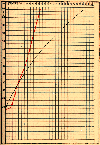
|
Fig. 76. Infant having a hare-lip and cleft palate.
Artificial feeding.
|
|
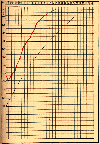
|
Fig. 77. Infant who could not support human milk.
Artificial feeding.
|
|
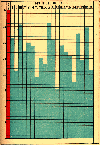
|
Fig. 78. Result of analysis of the milk-supply of Paris
on June 1, 1898. Columns showing the quantities of butter
contained in samples of milk from the various districts.
|
|
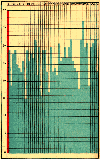
|
Fig. 79. Quantities of butter contained in forty-five
samples of milk collected from a poor quarter of Paris
(Rothschild).
|
|

|
Fig. 80. On the left: upper part of a wide-mouthed
bottle, with indiarubber disc in place. In the middle:
metallic capsule for keeping the disc in position. On the
right: disc after sterilisation, showing the effect of
atmospheric pressure.
|
|
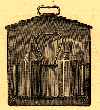
|
Fig. 81. Section of a milk steriliser, showing bottles
with discs and capsules in position, resting on a metal
support.
|
|

|
Fig. 82. Indiarubber stopper. On the right: stopper in
position on bottle after sterilisation. The central
depression shows that a vacuum exists in the bottle.
|
|

|
Fig. 83. Gentile's apparatus.
|
|

|
Fig. 84. A, indiarubber hood. B, appearance after
sterilisation. C, section of hood and bottle.
|
|
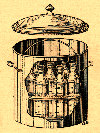
|
Fig. 85. Budin's apparatus for sterilisation.
|
|
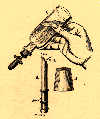
|
Fig. 86. The galactophore for artificial feeding. A,
tubes for the passage of air and milk. B, indiarubber
stopper by which the instrument is fixed in the neck of a
bottle. C, bottle containing milk, showing the galactophore
furnished with a teat.
|
|
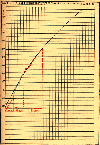
|
Fig. 87. Maternal feeding at first insufficient. Mixed
feeding temporarily practised. When the mammary secretion
became more abundant, the child was exclusively breast-fed.
|
|
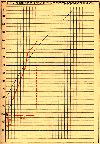
|
Fig. 88. Curve of a weakling who was first placed upon
artificial feeding, then upon mixed feeding, and then upon
breast-feeding exclusively. The mother, who had no milk at
the beginning, ultimately proved an excellent nurse.
|
|
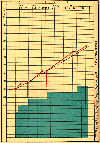
|
Fig. 89. Curve showing how the quantity of cows' milk has
to be increased in mixed feeding.
|
|
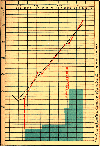
|
Fig. 90. Curve showing how mixed feeding may lead to
artificial feeding.
|
|
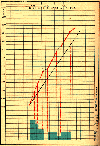
|
Fig. 91. Mother had not enough milk. Child placed upon
mixed feeding. The mammary secretion became more abundant
till the child was exclusively breast-fed.
|
Return to The Nursling Contents Page
Created 2/17/97 / Last modified 2/17/97
Copyright © 1998 Neonatology on the Web / webmaster@neonatology.net














